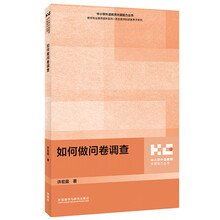Chapter 1 Introduction
1.1 The Social View Towards Research Articles
1.2 Objectives of the Study
1.3 Significance of the Study
1.4 Outline of the Book
Chapter 2 Key Concepts Defined
2.1 The RA Genre
2.1.1 The Concept of the RA
2.1.2 Characteristics of the RA
2.2 Identity
2.2.1 The Concept of Identity
2.2.2 Discoursal Construction of Identity
2.2.3 Writer Identity in Academic Writing
2.3 The RA Genre and Authorial Identity
Chapter 3 Literature Review
3.1 Interaction in Academic Writing
3.1.1 Under Different Terms
3.1.2 On Different Aspects
3.2 Interaction in RA Genre
3.3 Identity Construction in Academic Discourse
3.3.1 Theoretical Research on Identity Construction in Academic Writing
3.3.2 Practical Research on Identity Construction in Academic Writing
3.4 Identity Construction in RA Genre
Chapter 4 TheoreticalFramework
4.1 Hyland‘s Model of Academic Interaction
4.1.1 Stance and Writer-oriented Interaction
4.1.2 Engagement and Reader-oriented Interaction
4.2 Genre Analysis
4.2.1 Traditions of Genre Analysis Theories
4.2.2 Genre Analysis of RAs
4.3 The Framework Used in This Study
4.3.1 Motivations for the Present Framework
4.3.2 The Framework for Analyzing lnteractional Features in RAs...
Chapter 5 Research Design
5.1 Data Selection and Corpus Building
5.1.1 Data Selection
5.l.2 Corpus Building
5.2 Data Analysis
5.2.1 Annotation
5.2.2 Method of Analysis
Chapter 6 Frequency of Stance and Engagement Markers in English and Chinese RAs
6.1 Frequency of Stance Markers in English and Chinese RAs
6.1.1 Hedges in English and Chinese RAs
6.1.2 Boosters in English and Chinese RAs
6.1.3 Attitude Markers in English and Chinese RAs
6.1.4 Self-mention in English and Chinese RAs
6.1.5 Summary of Stance Markers Used in RAs
6.2 Frequency of Engagement Markers in English and Chinese RAs
6.2.1 Reader pronouns in English and Chinese RAs
6.2.2 Personal Asides in English and Chinese RAs
6.2.3 Appeals to Shared Knowledge in English and Chinese RAs.
6.2.4 Directives in English and Chinese RAs
6.2.5 Questions in English and Chinese RAs
6.2.6 Summary of Engagement Markers Used in RAs
Chapter 7 Distribution of Stance and Engagement Markers Across Generic Structure in English and Chinese RAs
7.1 Distribution of Stance Markers Across Generic Structure in English and Chinese RAs
7.1.1 Hedges Across Generic Structure
7.1.2 Boosters Across Generic Structure
7.1.3 Attitude Markers Across Generic Structure
7.1.4 Self-mention Across Generic Structure
7.1.5 Summary of Stance Markers Across Generic Structure in English and Chinese RAs
7.2 Distribution of Engagement Markers Across Generic Structure in English and Chinese RAs
7.2.1 Reader Pronouns Across Generic Structure
7.2.2 Personal Asides Across Generic Structure
7.2.3 Appeals to Shared Knowledge Across Generic Structure in As
7.2.4 Directives Across Generic Structure
7.2.5 Questions Across Generic Structure
7.2.6 Summary of Engagement Markers in English and Chinese RAs
Chapter 8 Manifestations of Authorial Identity Construction
8.1 Manifestations of the RA Writer’s Identity
8.2 Social and Psychological Features Influencing Authorial Identity Construction
8.2.1 Reconciliation Between Ethical Canons and Cognitive Constructs
8.2.2 Beliefs About Utterance Production and Interpretation
8.2.3 Perceptions of Face
8.2.4 Implementation of Academic Norms
Chapter 9 Conclusion
9.1 Summary of Major Findings
9.2 Implications of the Current Research
9.2.1 Implications for RA Writing
9.2.2 Implications for the Teaching of Academic Writing
9.3 Limitations of the Research
9.4 Recommendations for Future Research Bibliography
Appendices
Appendix 1 English and Chinese RAs Used as Data of This Study
Appendix 2 Excerpts of English and Chinese RAs
Index










